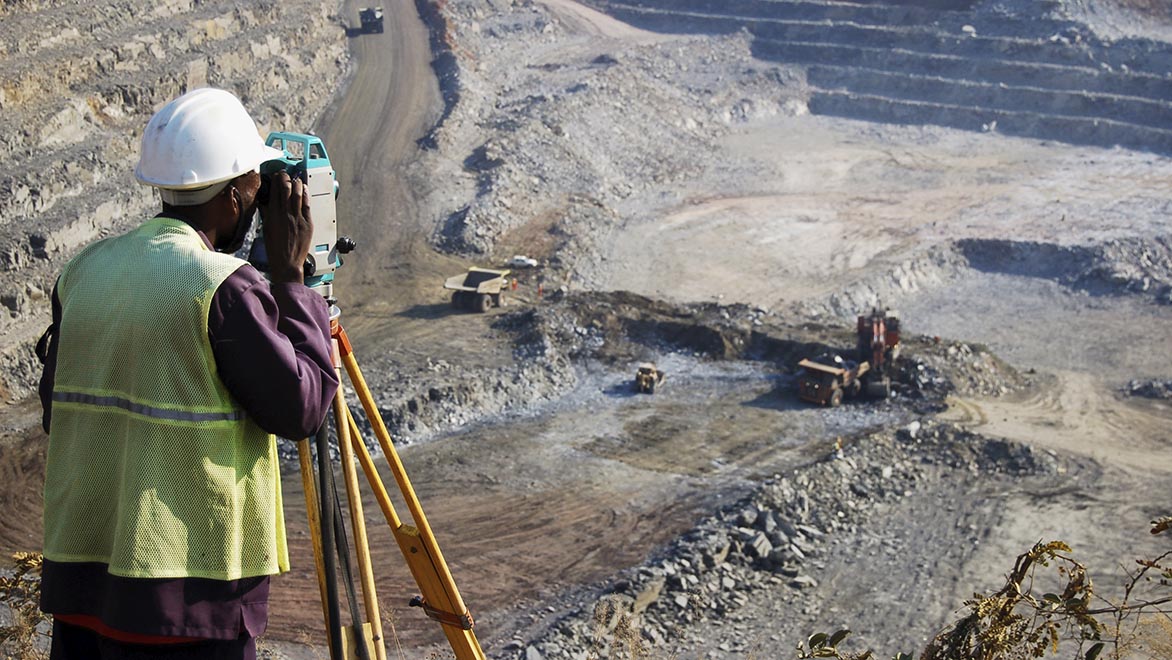The Ultimate Guide To Geotheta
The Ultimate Guide To Geotheta
Blog Article
Geotheta - The Facts
Table of ContentsThe Best Strategy To Use For GeothetaMore About GeothetaLittle Known Facts About Geotheta.The 25-Second Trick For Geotheta
They work together with civil engineers, structural designers, designers, and other professionals to integrate geotechnical factors to consider right into the total job style and building procedure. This requires effective synergy, control, and interaction to make certain that the geotechnical facets straighten with the task goals and meet regulatory requirements.Mining & Materials Design: Concepts of boring, penetration prices, and aspects affecting the selection of boring method. Qualities of explosives, shooting systems and blast patterns. Blasting techniques in surface area and underground operations. Unique blasting techniques at excavation borders. Resonance and sound control. Mechanical and continual strategies to fragmentation, consisting of longwall shearing and fullface boring.
Integrated analysis of fragmentation and comminution procedures. Offered by: Mining & Products Design.
The 25-Second Trick For Geotheta
Bachelor's degree programs in civil, geotechnical, geological, and environmental design normally last 4 years and consist of general education and learning training courses in English, social scientific research, and the liberal arts, as well as programs in innovative mathematics, structural geology, and liquid mineralogy. (https://moz.com/community/q/user/geotheta?_gl=1*xkyvtd*_up*MQ..*_ga*NjU0Mjk2NzIxLjE3MjI2MDU1Nzc.*_ga_DS7K9Q3S5W*MTcyMjYwNTU3Ni4xLjAuMTcyMjYwNTU3Ni4wLjAuMA..)
Geotechnical engineering entails the evaluation of the dirt and rock problems at a particular website, and their effects for the growth of that site. As the majority of structures count on the ground for support, it is without shock that a comprehensive understanding of the ground problems, and the viability of structure systems, are important to the lasting stability and performance of the building or framework.
Being experts in the investigation of geological developments and ground practices, geotechnical engineers do clinical investigations and testing to recognize the impact these geological formations might carry the design and building of structure, civil and facilities jobs. This experience is important for the style and building and construction of structures, roads, passages, dams, bridges, and water supply and sewage systems.
The geotechnical group at Douglas Allies routinely consult with architects, style designers, developers, and builders to make referrals on style and advancement proposals to guarantee that the built structures are appropriately created for the ground problems. The style of footing systems needs to consider the weight of the structure, the ability of the ground to support that weight with each other with activity resistances and effective building.
How Geotheta can Save You Time, Stress, and Money.
This task is significantly simplified by the use our Douglas Map geospatial platform that makes this details easily easily accessible in a very easy to make use of internet browser user interface. A geotechnical designer will certainly route the boring of boreholes and test pits to collect dirt and other examples, and also evaluate surface area functions and ground exposures to develop a geotechnical model of the subsurface conditions.
Depending on the project type and ground problems ran into, lab screening may to name a few things assess stamina, compressibility, reactivity and/or leaks in the structure of soil and rock examples. After this information is gathered and looked at, the results are used for a geotechnical design of the website, which is normally provided as areas across the site.

A geotechnical examination by nature can just examine the ground problems at the locations drilled or excavated. All-natural variants in soil and rock problems can occur throughout a site and in between examination locations. It is consequently good method that the geotechnical designer be kept throughout building and construction of the project to give on-site confirmation that the ground conditions run into follow the expectations and suggestions offered in the geotechnical examination record.
Geotheta - The Facts
Geotechnical designers use their thorough understanding of dirt and rock to examine threat and solve troubles on varied infrastructure projectsGeotechnical design is a specialist branch of civil engineering which checks out the behavior of earth products and the application of soil and rock mechanics. Tailings Engineer. As a geotechnical engineer, you will certainly analyze the physical, mechanical and chemical properties of soil and rock in order to design foundations, retaining structures and earthworks
Geotechnical engineering is very closely linked to and overlaps with, both design geology and ground engineering - https://sketchfab.com/geotheta. It's feasible to specialise in geotechnics or work for a geotechnical company but be referred to as an engineering rock hound or a ground designer. As a geotechnical engineer, you'll need to: build and preserve relationships with customers and other professionals associated with the website, throughout each projectmaintain security requirements on site bear in mind expense ramifications when you make recommendationsstudy geological maps and aerial photographs from a variety of sources and from different time periodsexamine construction plans to see just how practical they are based on your understanding of the siteinvestigate threats or webpage geological dangers for the sitesearch for ecologically delicate functions, such as garbage dump start to create valid and interpretive ground modelsplan area investigationsdrill and analyse samples of bedrock, dirt, groundwater and additional products manage various other specialists on sitesolve technological issues as they develop, such as unanticipated frameworks at drill sitesmonitor conditions throughout and after construction to see to it structures are secure in the short and lengthy termadding data gathered on website to your preliminary researchcreating geotechnical calculations, illustrations, and two or three-dimensional computer system models interpreting the datamaking recommendations regarding the proposed use the site

Report this page